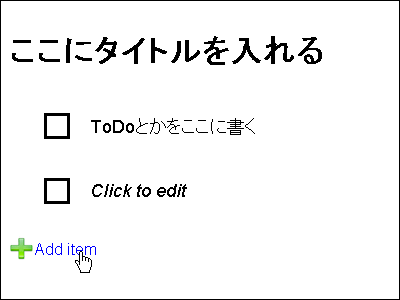What is 'Zettelkasten', a method created by a German sociologist who can create efficient notes?

Each person has his or her own way of writing notes, such as itemizing important contents or drawing highlight lines. The notebook-making method called Zettelkasten is a method of managing knowledge by writing one element on a small piece of paper instead of managing knowledge with one notebook, You can start with a box to store.
Stop Taking Regular Notes; Use a Zettelkasten Instead
Zettelkasten — How One German Scholar Was So Freakishly Productive
https://writingcooperative.com/zettelkasten-how-one-german-scholar-was-so-freakishly-productive-997e4e0ca125
Notes in notes are useful not only for summarizing what you need, but also for scribbling in the margins to quickly jot down insights and ideas that come to your mind. Also, creating a book, article, or abstract of a paper in a notebook will help you to revisit what you have learned later. However, Amazon engineer Eugene Yang said that the problem when gathering ideas in notebooks is that ``the ideas and knowledge on the notebook are scattered and other related knowledge and ideas when reviewing the notebook. Cannot be referred to immediately.'
Also, if the note is digitized, you can search for ideas on other pages by searching the text, but if you are using a paper note, flip through the notes and look for past ideas. And worse, you might forget other ideas in your notebook.

The Zettelkasten recommended by Mr. Yang is a memo by 'Zettel' and a box by 'kasten', and is said to have been created by German sociologist
Luhmann has published over 70 books and published over 500 academic papers in 40 years of research. It was Zettelkasten who helped Luhmann write many books and papers. Luhmann was an early practitioner of writing notes that focused on connecting knowledge and ideas.
◆ Zettelkasten rules
Zettelkasten is a tool that allows you to store and organize your knowledge, expand your memory, create new connections between ideas, and enhance your text output. To get the most out of Zettelkasten, you need to follow some rules. Zettelkasten also manages knowledge on a separate card basis, rather than a page of notes.
1: Enter one idea per card
This principle means that you write only one idea on a card. That way, you can link and connect ideas.
2: Complete the contents of the card
The contents of each card must be completed in one piece. In other words, it means that it is necessary to understand the meaning only by the content written on one card. This allows each card to be moved, separated and joined without affecting other cards.
3: Cards always link to other cards
When adding a card, be sure to link it with an existing card, and be careful not to have an independent card that is separate from other cards. Luhmann himself said, 'Each card is only an element of deriving knowledge from a linked network. Cards that are not connected to the network are lost and forgotten.'
4: Explain what the link on the card means
Whenever you link two cards together, make a brief note of why they are linked. This is to prevent you from wondering why you linked your card when you referenced it in the years to come.
5: Use your own words
It is not recommended to duplicate existing text on the card. If you come up with an interesting idea and want to add it to Zettelkasten, express it in your own words and in a way that you'll be sure to understand after years of reading.
6: leave references
Be sure to note the bibliography information on the card so you can see where you got the idea. It also prevents plagiarism and makes it easier to reference the original source later.
7: Add your thoughts
Add your thoughts to Zettelkasten as a card, keeping in mind rules 1, 2, and 3.
8: Don't worry about the structure
Don't worry about adding new cards to your neat cards or putting them in your own preconception category. I will add more ideas as I come up.
9: Add connection card
When you find a connection between cards that seemingly unrelated, create a connection card. A connection card is a special card whose purpose is to explain the relationship of the links between each card.
10: Add outline cards
When the ideas you've written on the card start to come together, create an outline card. An outline card is a card that summarizes links to other cards, and is a card that arranges each card in order to understand the flow of links.
11: Do not delete the card
Old cards will not be deleted, even if they are incorrect. Instead, create a link to the new card that explains what's wrong with the old card. By doing so, Zettelkasten will reflect how his thoughts have changed over time.
12: Add cards without fear
Zettelkasten is finite and cannot pack too much information. Sometimes I add nonsense cards. However, adding cards does not break Zettelkasten, so it's important to add ideas that may be meaningless.
Following these twelve rules, Luhmann used handwritten cards and a wooden cabinet to create a large Zettelkasten that could hold about 90,000 cards.

◆ How to start Zettelkasten
Zettelkasten is ready to go with a pen, a blank card cut to size, and a container or shelf where you can put your cards together. You don't have to prepare a large cabinet like Luman's original Zettelkasten.
First, write down your knowledge and ideas on the card. Then write the identifier in one corner of the card. For example, write the first card created as 1 and the second card as 2, so that all cards have different numbers and symbols.

If you want to insert some new cards between the cards '1' and '2' later, add an identifier such as '1/1' '1/2' '1/3'. ..
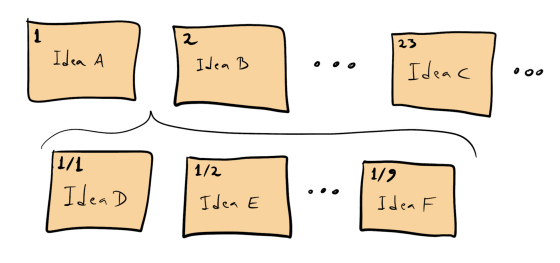
You can insert additional cards between newly created cards by adding a slash. For example, to insert a new card between '1/1' and '1/2', enter numbers like '1/1/1' '1/1/2' '1/1/3'. Allocate.
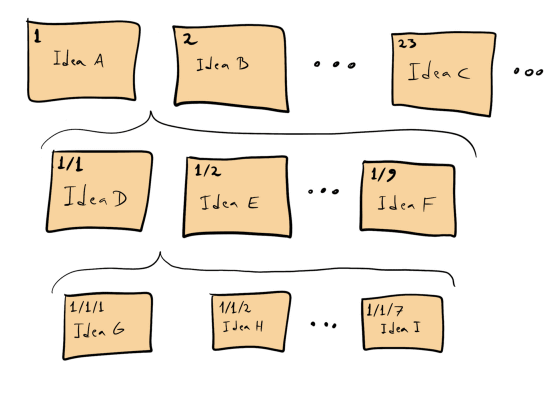
Use an identifier to create a link between two cards. For example, when creating a link from the card '1/1' to the card '1', add the number '1' somewhere on the card '1/1' to link the cards as you like.

If you want to tag the card, just write the tag on the card itself.

Also, in order to make it easier to find a card with a specific tag, we will create another card for management and list and manage all tags used.
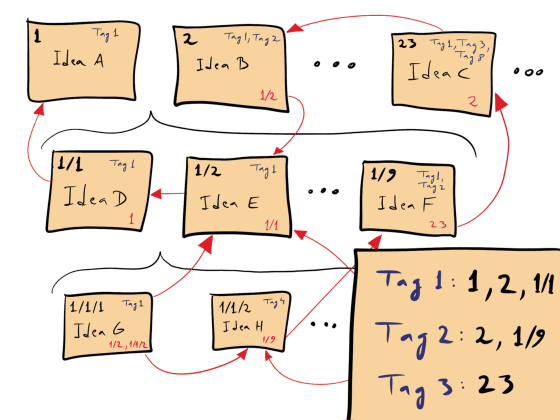
These are the basic steps for Zettelkasten using only paper cards. The cards that Luhmann actually created by following the procedure of Zettelkasten can be seen from the following site.
Inhaltsübersicht ZK I-Niklas Luhmann-Archiv
https://niklas-luhmann-archiv.de/bestand/zettelkasten/inhaltsuebersicht
◆ Zettelkasten web service
There is an application that allows you to create cards based on Zettelkasten's rules for free without the need for paper and pen. Mr. Yang cites the following three services. Mr. Yang says he mainly uses Roam Research.
Zettelkasten knowledge and info management • Zettelkasten Method
https://zettelkasten.de/
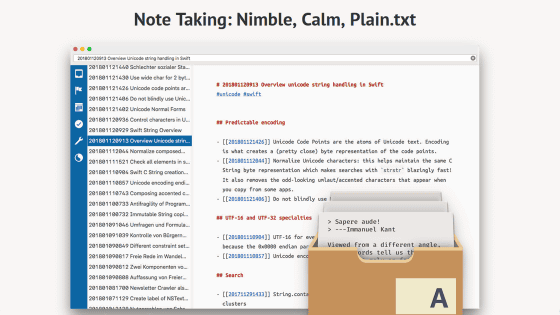
Zettlr | A Markdown Editor for the 21st Century
https://www.zettlr.com/
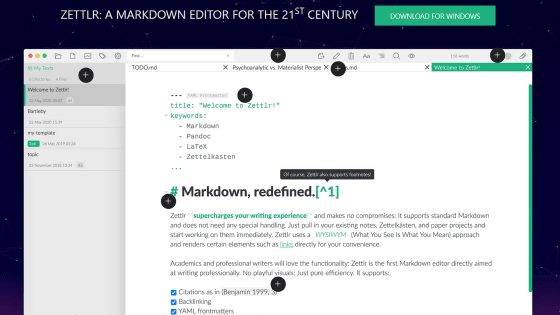
Roam Research – A note taking tool for networked thought.
https://roamresearch.com/
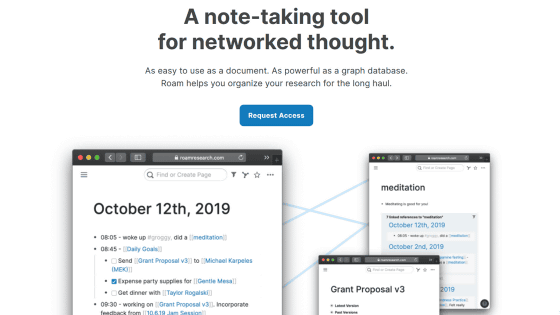
Related Posts:
in Note, Posted by darkhorse_log




